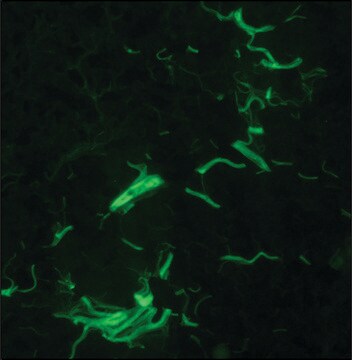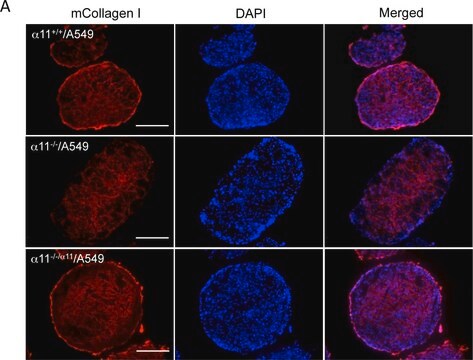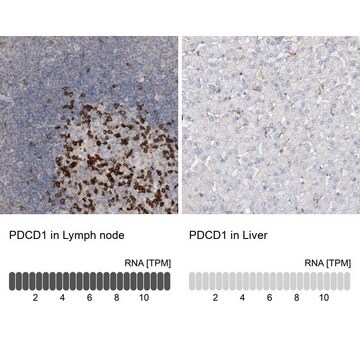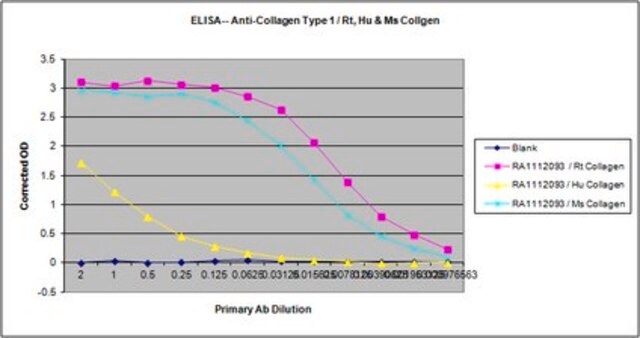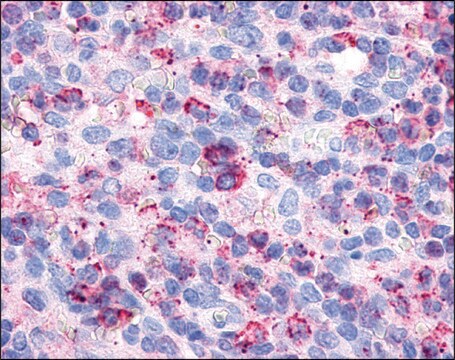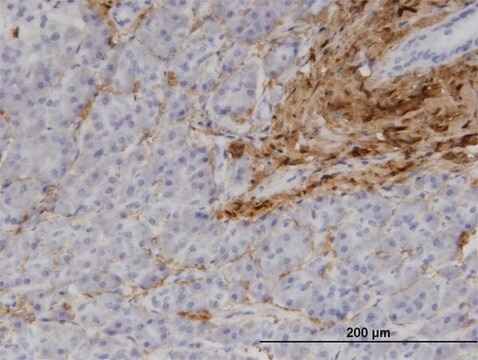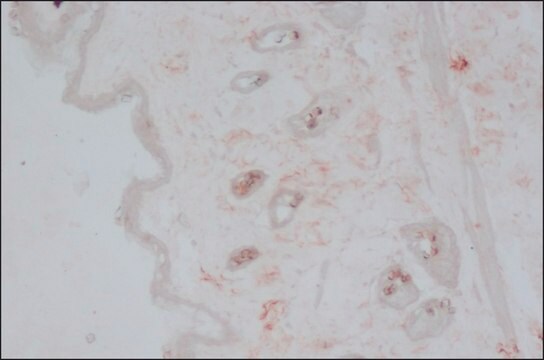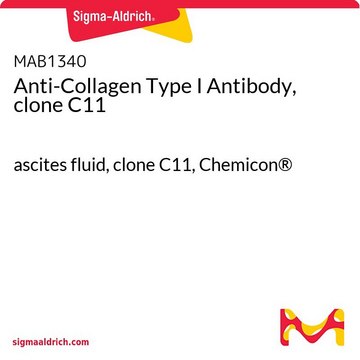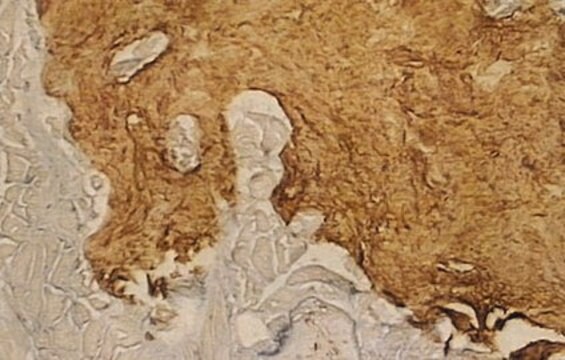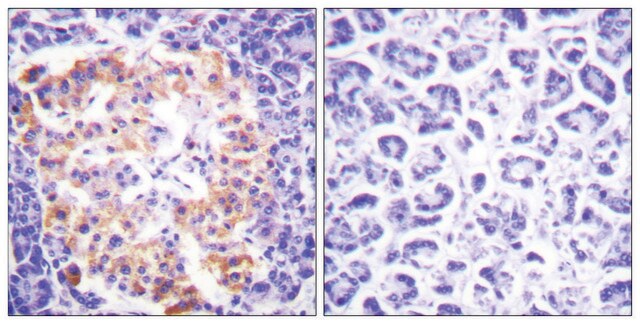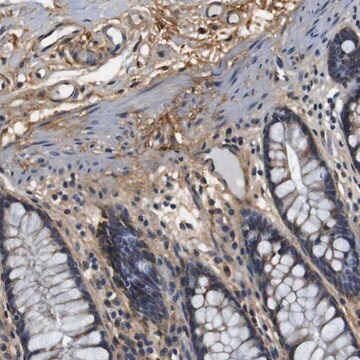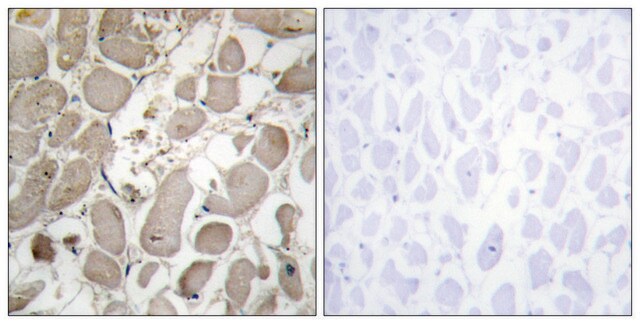C2456
Monoclonal Anti-Collagen, Type I antibody produced in mouse
clone COL-1, ascites fluid
Sinônimo(s):
Collagen Type 1 Antibody, Collagen Type 1 Antibody - Monoclonal Anti-Collagen, Type I antibody produced in mouse, Collagen Type I Antibody, Type 1 Collagen Antibody
About This Item
Produtos recomendados
fonte biológica
mouse
conjugado
unconjugated
forma do anticorpo
ascites fluid
tipo de produto de anticorpo
primary antibodies
clone
COL-1, monoclonal
contém
15 mM sodium azide
reatividade de espécies
bovine, human, pig, rat, rabbit, deer
técnica(s)
dot blot: suitable
immunohistochemistry (frozen sections): 1:2000 using human or other mammalian frozen sections
indirect ELISA: suitable
Isotipo
IgG1
nº de adesão UniProt
Condições de expedição
dry ice
temperatura de armazenamento
−20°C
modificação pós-traducional do alvo
unmodified
Informações sobre genes
rat ... Col1a1(29393)
Descrição geral
Especificidade
Imunogênio
Aplicação
- immunohistochemistry
- dot blot technique
- indirect immunofluorescence staining
Ações bioquímicas/fisiológicas
forma física
Armazenamento e estabilidade
Exoneração de responsabilidade
Não está encontrando o produto certo?
Experimente o nosso Ferramenta de seleção de produtos.
Código de classe de armazenamento
12 - Non Combustible Liquids
Classe de risco de água (WGK)
nwg
Ponto de fulgor (°F)
Not applicable
Ponto de fulgor (°C)
Not applicable
Certificados de análise (COA)
Busque Certificados de análise (COA) digitando o Número do Lote do produto. Os números de lote e remessa podem ser encontrados no rótulo de um produto após a palavra “Lot” ou “Batch”.
Já possui este produto?
Encontre a documentação dos produtos que você adquiriu recentemente na biblioteca de documentos.
Os clientes também visualizaram
Nossa equipe de cientistas tem experiência em todas as áreas de pesquisa, incluindo Life Sciences, ciência de materiais, síntese química, cromatografia, química analítica e muitas outras.
Entre em contato com a assistência técnica
